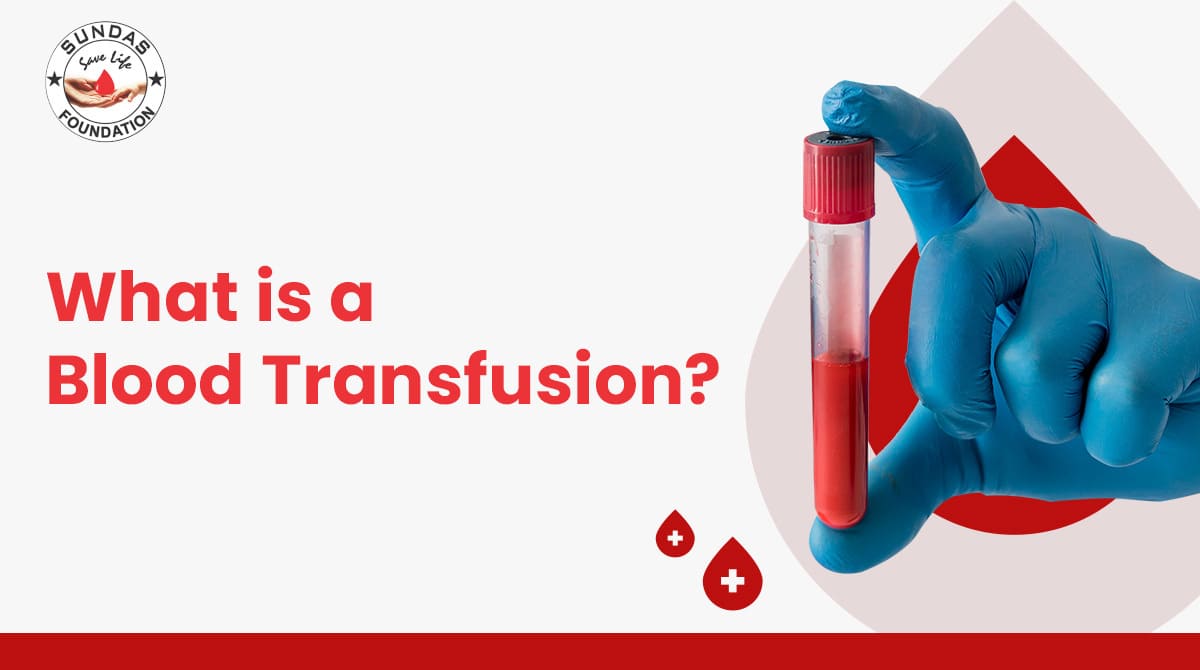
Blood Transfusion - A Complete Guide
Blood transfusion is a critical medical procedure that can save lives in emergencies and provide necessary support to patients with chronic conditions. Whether you are receiving blood transfusions regularly for conditions like Thalassemia or Hemophilia, or it's an urgent procedure to address trauma or surgery, understanding the basics is essential. In this article, we will explore the various aspects of blood transfusion, including the process, when it's needed, and how it works, along with the vital role organizations like Sundas Foundation play in making blood transfusions accessible to the underserved population.
What is a Blood Transfusion?
A blood transfusion is a medical procedure in which blood or blood components are given to a person through an intravenous (IV) line. This process helps restore blood volume, red blood cells, platelets, or plasma in patients who are either losing blood rapidly, like in trauma, or have a condition that causes their body to lose blood at an unsustainable rate.
In simple words, blood transfusion is the process of transferring blood from a donor to a patient's body when the recipient's blood cells fail to produce enough blood.
What are the Signs That You Need a Blood Transfusion?
There are several signs and symptoms that might indicate you need a blood transfusion. These signs are usually associated with a significant drop in blood volume or functionality:
- Severe Fatigue and Weakness: When your body doesn’t have enough red blood cells, it can make you feel weak, tired, or dizzy.
- Pale Skin: Low red blood cell count often causes paleness, especially in the lips, nails, or the inner part of the eyelids.
- Shortness of Breath: A reduced oxygen-carrying capacity of the blood can make breathing feel more difficult.
- Rapid Heartbeat: The heart works harder to pump oxygenated blood when there is not enough blood circulating throughout the body.
- Unusual Bleeding: Heavy bleeding or bruising, even without trauma, can be a sign of low platelets and might require a transfusion.
Blood Transfusion Procedure
The blood transfusion procedure involves several key steps to ensure that the patient receives the correct blood type and the transfusion is done safely:
- Preparation: The medical team will conduct tests to determine the patient's blood type and ensure it matches the donor blood. Donor blood is carefully screened for infectious diseases.
- IV Line Insertion: An intravenous (IV) line is inserted into a vein, typically in the arm, to allow the blood to flow into the body.
- Blood Administration: The blood or blood component (red blood cells, plasma, platelets, etc.) is slowly infused into the patient's body through the IV line.
- Monitoring: The patient is closely monitored during the transfusion for any signs of allergic reactions or complications.
- Completion and Aftercare: Once the transfusion is complete, the healthcare team will continue to monitor the patient for a period to ensure no adverse reactions occur.
The entire process usually takes one to four hours, depending on the type of blood and the patient's needs.
Blood Transfusion Policy
Hospitals or medical organizations employ blood transfusion policies to ensure that blood transfusions are performed safely and effectively. It includes guidelines and procedures such as screening donors against recipients for compatibility purposes and monitoring patients during and after transfusion. Adherence to such policies is crucial in order to avoid complications like transfusion reactions or disease transmission from occurring.
Sundas Foundation plays an invaluable role in providing blood transfusion services to underprivileged patients suffering from conditions like Thalassemia in Pakistan, where resources are limited.
When Do You Need a Blood Transfusion?
You may need a blood transfusion in several situations, such as:
- Blood Loss from Surgery or Trauma: If you lose a significant amount of blood, a transfusion is often required.
- Anemia: Severe anemia, especially in conditions like Thalassemia or sickle cell disease, may require regular blood transfusions.
- Platelet Deficiency: Platelet transfusions are required for patients with bleeding disorders or those undergoing chemotherapy.
- Childbirth Complications: Women who experience heavy bleeding during labor or childbirth may require a transfusion to replace the lost blood.
Why Would a Person Need a Blood Transfusion?
There are many medical reasons why a person might need a blood transfusion:
- Chronic Conditions: Individuals with disorders like Thalassemia, Hemophilia, or sickle cell disease may require regular transfusions to manage their conditions.
- Trauma: In case of accidents, surgeries, or injuries that lead to severe blood loss, transfusions are necessary to stabilize the patient.
- Cancer Treatment: Chemotherapy and radiation can lead to low blood cell counts, requiring blood transfusions to help restore normal levels.
- Pregnancy Complications: Conditions like postpartum hemorrhage (excessive bleeding after delivery) may necessitate a blood transfusion.
How Soon After a Blood Transfusion Do You Feel Better?
Recovery time after receiving a blood transfusion depends on an individual's specific medical situation and level of blood loss. For some, they may start feeling better within hours as their oxygen-carrying capacity improves. However, for those receiving regular transfusions due to chronic diseases like Thalassemia, full recovery can take several days longer.
How Much Blood Loss in Labour Before Transfusion?
During labor, if a woman loses more than 500 milliliters of blood after a vaginal delivery or 1000 milliliters after a cesarean section, a blood transfusion may be required. Severe cases of postpartum hemorrhage can lead to life-threatening situations, necessitating prompt intervention.
How Much Is a Blood Transfusion?
The cost of a blood transfusion can depend on several variables, including the blood facility needed and location. On average, costs typically range from several hundred dollars up to thousands, with additional expenses including hospital stay fees and blood type testing/monitoring as necessary.
Sundas Foundation works tirelessly to provide free blood transfusion services, particularly to underprivileged individuals suffering from blood-related disorders.
Autologous Blood Transfusion
An autologous blood transfusion involves giving one's own blood prior to scheduled surgery so if any is lost during the process they can receive their own back quickly without risking allergic reactions or transmission of infections.
Intrauterine Blood Transfusion
An intrauterine blood transfusion (IUT) is a specialized procedure used to treat severe anemia in a fetus during pregnancy. Blood is transfused directly into the fetus’s bloodstream through the umbilical cord. This procedure is typically performed in cases of Rh incompatibility or fetal anemia.
Blood Transfusion Bag
A blood transfusion bag is the container used to store and transport donated blood. These bags are designed to preserve the blood for safe transfusion and typically contain additives that help maintain the blood's function and prevent clotting.
Is Blood Group Matching Necessary for Platelet Transfusion?
Yes, blood group matching is important for platelet transfusion. However, the matching is usually less strict than for red blood cell transfusions, as platelets have less impact on the ABO group system. Nonetheless, it’s still critical to match blood types as closely as possible to avoid immune reactions.
Donate to Sundas Foundation
Sundas Foundation of Pakistan stands out among organizations by offering free medical services such as blood transfusions to those most in need, especially individuals suffering from chronic disease like Thalassemia and Hemophilia.They rely heavily on donations from individuals and organizations to continue their lifesaving work. Donating to Sundas Foundation can directly impact the lives of many.
Frequently Asked Questions
Q1: Can I donate blood to Sundas Foundation?
Yes, you can donate blood directly to Sundas Foundation or contribute through their campaigns. Your donation can help save lives.
Q2: How often does someone with Thalassemia need blood transfusions?
Thalassemia patients may require blood transfusions every few weeks to maintain healthy blood levels.
Q3: Are blood transfusions safe?
Yes, blood transfusions are safe, especially when they are properly matched and screened for infections.
Q4: How long does a blood transfusion take?
A typical blood transfusion lasts 1-4 hours, depending on the amount and type of blood being transfused.
Q5: Can blood transfusions cause side effects?
In some cases, patients may experience mild allergic reactions, fever, or chills. Serious reactions are rare.
Q6: How can I support Sundas Foundation?
You can support Sundas Foundation by donating money, blood or even volunteering your time to help them continue their life-saving work.

